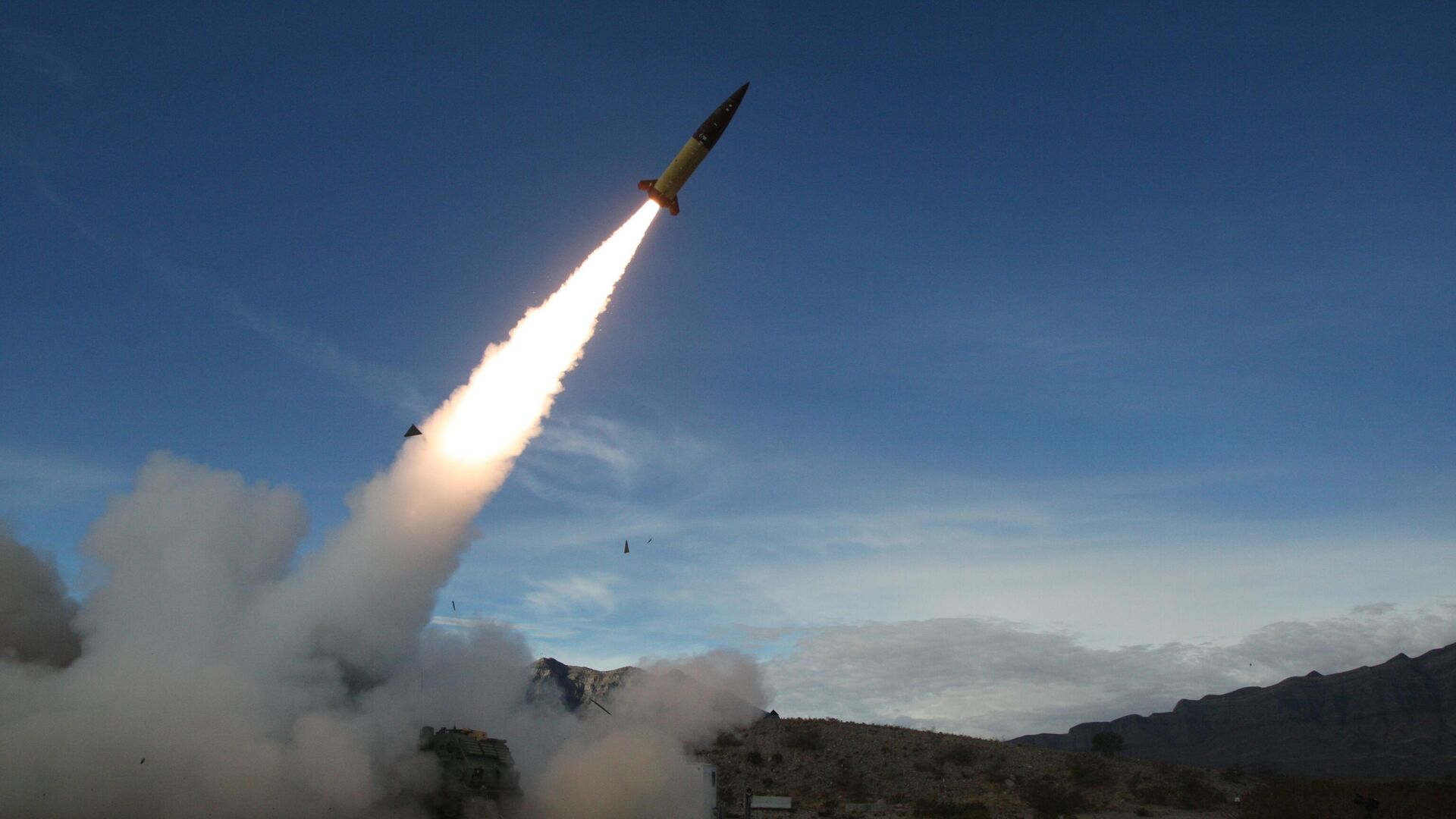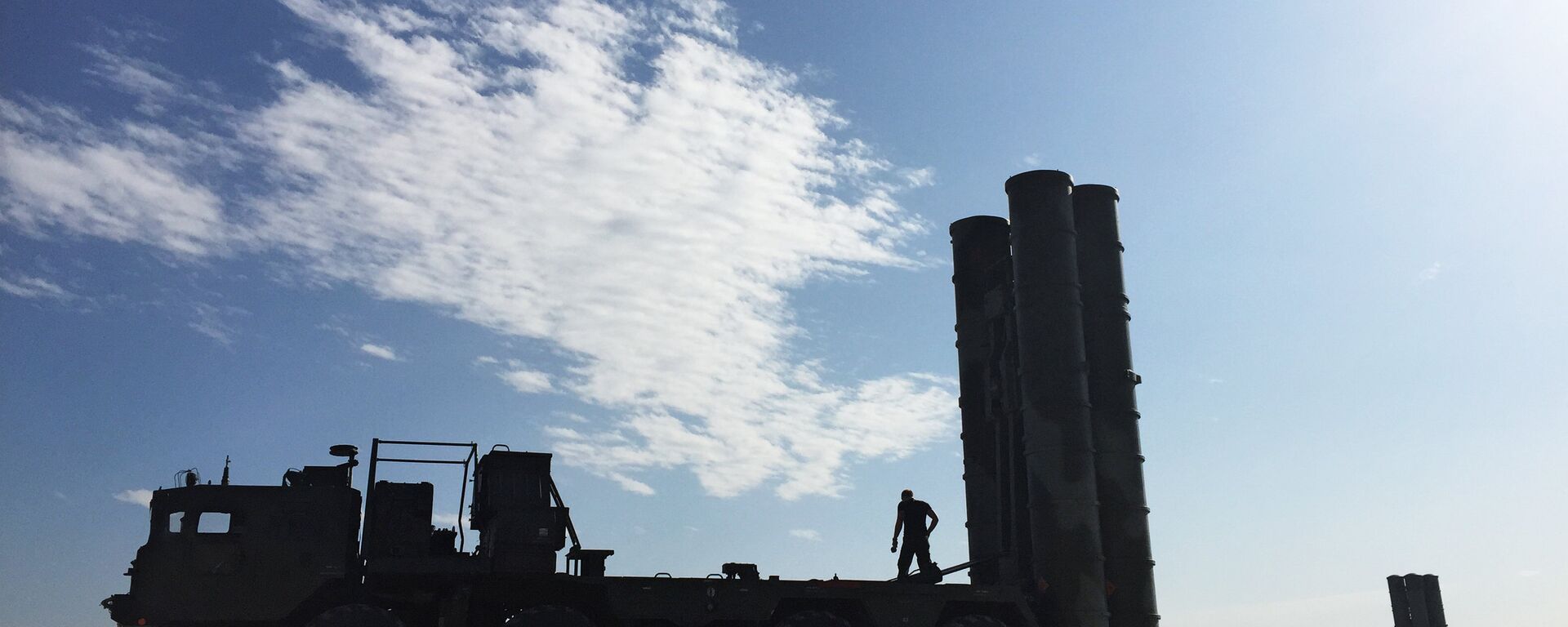https://sputniknews.in/20240914/natos-support-for-ukraines-long-range-strikes-may-trigger-nuclear-response-indian-vets-8147866.html
NATO's Support for Ukraine's Long-Range Strikes May Trigger Nuclear Response: Indian Vets
NATO's Support for Ukraine's Long-Range Strikes May Trigger Nuclear Response: Indian Vets
Sputnik India
Russian Deputy Foreign Minister Sergei Ryabkov told TASS news agency on Saturday that NATO had already made a decision on whether to allow Ukraine to target Russia with western long-range missiles.
2024-09-14T16:28+0530
2024-09-14T16:28+0530
2024-09-14T18:39+0530
ukraine conflict
volodymyr zelensky
vladimir putin
antony blinken
russia
ukraine
united kingdom (uk)
nato
storm shadow missile
atacm missiles
https://cdn1.img.sputniknews.in/img/07e8/04/1e/7255696_0:160:3072:1888_1920x0_80_0_0_c05bd39ecb04ee349c7625bcfeb6acb7.jpg
Ryabkov didn't say what the decision was, but indicated that Moscow's warnings against further escalation haven't worked.Russian President Vladimir Putin warned this week that allowing the use of Western high-precision long-range systems, including Storm Shadows and ATACMs, would be tantamount to direct involvement of the North Atlantic Treaty Organisation (NATO) in Ukraine and change the very essence of the conflict. Putin said that these cutting-edge systems couldn't be used without western satellite data and would have to be operated by NATO personnel.The warning by the Russian President came against the backdrop of a joint visit by US Secretary of State Antony Blinken and UK Foreign Secretary David Lammy to Kiev to meet Volodymyr Zelensky this week. Blinken told Zelensky during the meeting that NATO allies would continue to "adapt" their policy in line with the developments on the battlefield.Reports in British media suggest that the UK has already authorised the use of Storm Shadow/SCALP missiles to strike deep inside the Russian territory.At the Ukraine Defence Contact Group Meeting at Germany's Ramstein Air Base on 6 September, Zelensky once pressured the NATO allies for "strong long-range decisions," as quoted by Ukrainian media.The Biden administration provided US-made ATACM missiles to Ukraine as part of a $300 million aid package unveiled in March. According to US media reports, the ATACMs have a range of nearly 300 km and would allow Ukraine to strike targets in Donbass and Crimea.On the other hand, the Storm Shadow are long-range cruise missile delivered from aircraft and have a range of 250 km. They are developed by the UK, but reportedly involve the use of American components. Last May, SCALPs were reportedly delivered to Ukraine on condition that they could not be used deep inside the Russian territory.Russia's Warning Should be Taken SeriouslyThere are several pressing reasons why Russia's warning against using long-range missiles should be taken seriously, Indian military veterans said."Ukrainians have already been using aerial systems to target Russian cities, but so far these are only indigenously-assembled UAVs. The use of Storm Shadows and ATACMs to target Russian territory would involve the use of American and British satellite guidance systems. These would only be operated by technical experts from these two countries. Technically speaking, it would be an American or a British expert firing off these missiles into Russia, if NATO cedes to Zelensky's demand," noted Major General (retired) Shashi Bhushan Asthana, a Director of United Services Institution (USI) of India and a former Additional Director General of Infantry in the Indian Army."So far, the NATO allies have been involved in a kinetic or non-kinetic but importantly non-contact warfare with Russia. This could evoke an entirely different response from Russia," Asthana remarked."However, as indicated by Deputy Foreign Minister Sergey Ryabkov last week, Russia might be looking to modify its nuclear doctrine in view of growing Western involvement in Ukraine. Therefore, any further escalation on part of NATO, including allowing Ukraine to use their long-range missiles against Russian targets, could invite a tactical nuclear strike," the military affairs expert said.Meanwhile, Indian Army veteran Major General Prabdeep Singh Behl pointed out that even ceding to Zelensky's request won't make much of a difference to the battlefield dynamics.He cautioned that a continuous supply of systems such as Storm Shadow and others could further deplete NATO's own stockpiles, as production of these systems takes time.
https://sputniknews.in/20231004/russia-developing-weapon-systems-to-counter-american-atacms-in-ukraine-4573706.html
russia
ukraine
united kingdom (uk)
donbass
lugansk people's republic (lpr)
donetsk people's republic (dpr)
crimea
germany
Sputnik India
feedback.hindi@sputniknews.com
+74956456601
MIA „Rossiya Segodnya“
2024
Dhairya Maheshwari
https://cdn1.img.sputniknews.in/img/07e6/0c/13/138962_0:0:641:640_100x100_80_0_0_2cb44360dbcdf6d84bf4b299cd045917.jpg
Dhairya Maheshwari
https://cdn1.img.sputniknews.in/img/07e6/0c/13/138962_0:0:641:640_100x100_80_0_0_2cb44360dbcdf6d84bf4b299cd045917.jpg
News
en_IN
Sputnik India
feedback.hindi@sputniknews.com
+74956456601
MIA „Rossiya Segodnya“
Sputnik India
feedback.hindi@sputniknews.com
+74956456601
MIA „Rossiya Segodnya“
Dhairya Maheshwari
https://cdn1.img.sputniknews.in/img/07e6/0c/13/138962_0:0:641:640_100x100_80_0_0_2cb44360dbcdf6d84bf4b299cd045917.jpg
long range missiles ukraine, atacm missile, atacm ukraine, storm shadow ukraine, british scalp missiles, zelenskyy long range missiles, putin warning, putin nuclear threat, russia nuclear doctrine, kursk, blinken ukraine visit, ukraine russia war, russia ukraine war, russia ukraine news
long range missiles ukraine, atacm missile, atacm ukraine, storm shadow ukraine, british scalp missiles, zelenskyy long range missiles, putin warning, putin nuclear threat, russia nuclear doctrine, kursk, blinken ukraine visit, ukraine russia war, russia ukraine war, russia ukraine news
NATO's Support for Ukraine's Long-Range Strikes May Trigger Nuclear Response: Indian Vets
16:28 14.09.2024 (Updated: 18:39 14.09.2024) Russian Deputy Foreign Minister Sergei Ryabkov told Russian media on Saturday that NATO had already made a decision on whether to allow Ukraine to target Russia with western long-range missiles.
Ryabkov didn't say what the decision was, but indicated that Moscow's warnings against further escalation haven't worked.
Russian President Vladimir Putin warned this week that allowing the use of Western high-precision long-range systems, including Storm Shadows and ATACMs, would be tantamount to direct involvement of the North Atlantic Treaty Organisation (NATO) in Ukraine and change the very essence of the conflict. Putin said that these cutting-edge systems couldn't be used without western satellite data and would have to be operated by NATO personnel.
The warning by the Russian President came against the backdrop of a joint visit by US Secretary of State Antony Blinken and UK Foreign Secretary David Lammy to Kiev to meet Volodymyr Zelensky this week. Blinken told Zelensky during the meeting that NATO allies would continue to "adapt" their policy in line with the developments on the battlefield.
On Friday, the UK Prime Minister Keir Starmer met US President Joe Biden at the White House, with the topic on whether to allow Ukraine to employ long-range western missiles against targets deep inside the Russian territory figuring prominently in the talks.
Reports in British media suggest that the UK has already authorised the use of Storm Shadow/SCALP missiles to strike deep inside the Russian territory.
At the Ukraine Defence Contact Group Meeting at Germany's Ramstein Air Base on 6 September, Zelensky once pressured the NATO allies for "strong long-range decisions," as quoted by Ukrainian media.
The Biden administration provided
US-made ATACM missiles to Ukraine as part of a $300 million aid package unveiled in March. According to US media reports, the ATACMs have a range of nearly 300 km and would allow Ukraine to strike targets in Donbass and Crimea.
On the other hand, the Storm Shadow are long-range cruise missile delivered from aircraft and have a range of 250 km. They are developed by the UK, but reportedly involve the use of American components. Last May, SCALPs were reportedly delivered to Ukraine on condition that they could not be used deep inside the Russian territory.
Russia's Warning Should be Taken Seriously
There are several pressing reasons why Russia's warning against using long-range missiles should be taken seriously, Indian military veterans said.
"Ukrainians have already been using aerial systems to target Russian cities, but so far these are only indigenously-assembled UAVs. The use of Storm Shadows and ATACMs to target Russian territory would involve the use of American and British satellite guidance systems. These would only be operated by technical experts from these two countries. Technically speaking, it would be an American or a British expert firing off these missiles into Russia, if NATO cedes to Zelensky's demand," noted Major General (retired) Shashi Bhushan Asthana, a Director of United Services Institution (USI) of India and a former Additional Director General of Infantry in the Indian Army.
Asthana explained that such a scenario would make the US and UK "direct parties to a contact, kinetic war with Russia.".
"So far, the NATO allies have been involved in a kinetic or non-kinetic but importantly non-contact warfare with Russia. This could evoke an entirely different response from Russia," Asthana remarked.
More importantly, Asthana warned that a further escalation by West could prompt Russia to revise its 2020-era 'Nuclear Doctrine', which justifies a nuclear response only in the event of a nuclear attack or if the existence of the state is threatened.
"However, as indicated by Deputy Foreign Minister Sergey Ryabkov last week, Russia might be looking to modify its nuclear doctrine in view of growing Western involvement in Ukraine. Therefore, any further escalation on part of NATO, including allowing Ukraine to use their long-range missiles against Russian targets, could invite a tactical nuclear strike," the military affairs expert said.
Further, Asthana said that Russia was well on its way to reverse the military gains by Ukraine in Kursk and pushing the troops out of Russian borders. "The Russian forces are also closing in on Pokrovsk, which lies on a major supply line for Ukrainian forces," he explained.
Meanwhile, Indian Army veteran Major General Prabdeep Singh Behl pointed out that even ceding to Zelensky's request won't make much of a difference to the battlefield dynamics.
"The US is well-aware of the fact that even ceding to Zelensky's request on the use of long-range precision strikes in Russia won't make any decisive difference. This was also stated by US Defence Secretary Lloyd Austin at the Ukraine Defence Contact Group Meeting at Ramstein last week," Behl underscored.
He cautioned that a continuous supply of systems such as Storm Shadow and others could further deplete NATO's own stockpiles, as production of these systems takes time.
"Previously, we have seen how the UK curtailed the supply of Challenger tanks to Ukraine after having donated 14 of them to Ukraine. The situation in Europe is quite precarious as their own reserves have been depleting- be it ammunition, air defence systems, tanks and missiles," Behl concluded.



